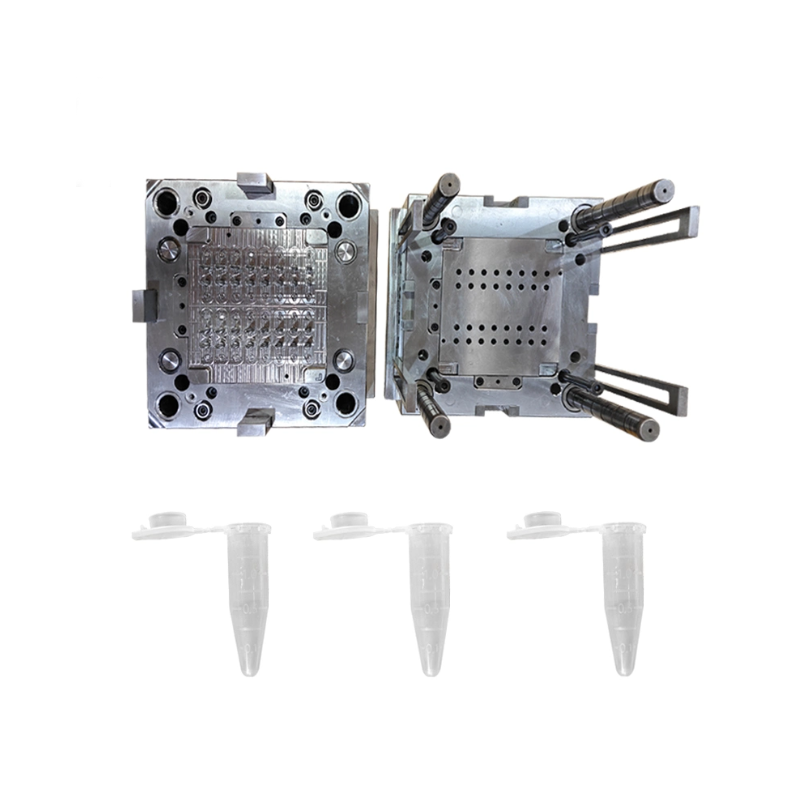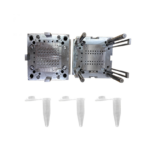China Factory 32-Cavity Medical Device Mold for Blood Test Tubes
Features:
| Parameter | Details |
| Place of Origin | Xiamen, China |
| Brand Name | OEM/ODM |
| Model Number | Provide drawings for quote |
| Product Material | Steel |
| Product | Household Appliance |
| Drawing Format Required | IGES, STEP, AutoCAD, Solidworks, STL, DWG, PDF, etc. |
| Mold Standard | LKM, HASCO, DME or as per customer’s requirement |
| Tolerance | +/-0.01~0.05mm |
| Process of Mold | CNC + EDM + Wire Cut + Assembling |
| Mold Material | NAK80, P20, H13, 718, S136, 1.2738, etc. |
| Mold Cavity | Single or Multiple Cavities |
| Mold Life | 50,000 to 1,000,000 shots |
| Production Material | Plastic resin |
| Packaging | Wooden case or Pallets |
| Export Country | Worldwide |
Customization Service for Our Molds:
– Design Consultation: Collaborate closely with clients to understand their specific design requirements and preferences.
– Technical Drawings: Create precise technical drawings and detailed specifications based on client input.
– Material Selection: Provide guidance in selecting appropriate materials for both the mold and the final product to ensure optimal performance and longevity.
– Tooling Development: Develop custom tooling and molds tailored to exact specifications and production needs.
– Prototype Production: Produce prototypes to validate design, functionality, and material choices before commencing full-scale production.
– Mold Fabrication: Employ advanced manufacturing techniques to fabricate high-quality, durable molds.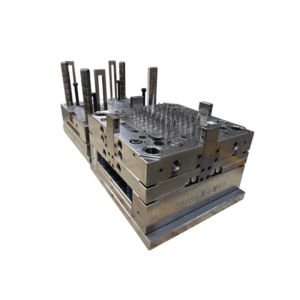
– Surface Finishing: Apply various surface treatments, including polishing, coating, and texturing, to meet both aesthetic and functional requirements.
– Testing and Validation: Conduct rigorous testing to ensure molds meet all quality standards and performance expectations.
– Adjustments and Iterations: Make necessary adjustments and refinements based on prototype testing and client feedback.
– Production Support: Offer ongoing support throughout the production process, including troubleshooting and maintenance.
– Quality Assurance: Implement stringent quality control measures to ensure molds meet industry standards and client specifications.
– Delivery and Installation: Manage logistics for timely delivery and provide installation support to ensure seamless integration into the production line.
Production Process:
- Design for Manufacturability (DFM) Report:
– Develop a comprehensive DFM report that evaluates the design’s feasibility and identifies potential manufacturing challenges. This includes assessing the product design for optimal moldability and cost-effectiveness.
- Mold Design:
– Create detailed and precise mold designs using advanced CAD software. This step involves defining mold geometry, cavity layout, and essential features based on the product specifications and requirements.
- Material Selection:
– Choose high-quality materials for mold construction, such as steel alloys or specialized polymers, based on the requirements of the product and the intended application.
- CNC Machining:
– Utilize CNC (Computer Numerical Control) machines to precisely cut and shape mold components. CNC machining ensures high accuracy and consistency in mold parts production.
- Laser Cutting:
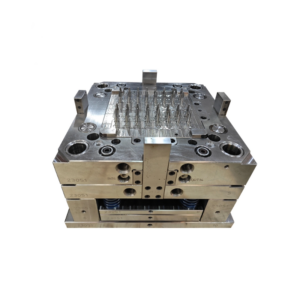
– Employ laser cutting technology for intricate and detailed cuts in mold components. This process provides high precision and clean edges, essential for complex mold designs.
- Wire Cutting:
– Use Wire EDM (Electrical Discharge Machining) to cut intricate details and complex shapes in the mold components. Wire cutting is critical for achieving high precision and fine tolerances.
- Grinding:
– Perform grinding to refine mold surfaces and ensure smooth finishes. This process enhances the accuracy of mold components and removes any residual machining marks.
- Mold Assembly:
– Assemble all mold components, including cavities, cores, and inserts, into a complete mold structure. This step involves fitting parts together with precision to ensure proper functionality.
- Stamping:
– Apply stamping processes to create specific features or impressions on the mold. Stamping is used for adding logos, text, or other surface details as required.
- Sample Inspection:
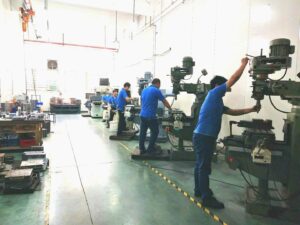 – Conduct thorough inspections of sample molds to verify that they meet design specifications and quality standards. This includes testing for functionality, accuracy, and overall performance.
– Conduct thorough inspections of sample molds to verify that they meet design specifications and quality standards. This includes testing for functionality, accuracy, and overall performance.
- Mass Production:
– Once the sample mold is approved, initiate mass production. This phase involves producing molds in large quantities, ensuring consistency and quality across all units.
- Cleaning:
– Clean molds thoroughly to remove any residual debris or contaminants from the manufacturing process. Proper cleaning is essential to maintain mold quality and ensure optimal performance
- Packing:
– Package the completed molds securely to prevent damage during transportation. Packaging includes protective materials and labeling to ensure safe and accurate delivery.
- Delivery:
– Coordinate the delivery of molds to the client’s location. This step involves logistics management to ensure timely and secure transportation of the molds.
- After-Sales Service:
– Provide comprehensive after-sales support, including maintenance, troubleshooting, and any necessary adjustments. This ensures that molds continue to perform well and meet client expectations over time.
![]()

